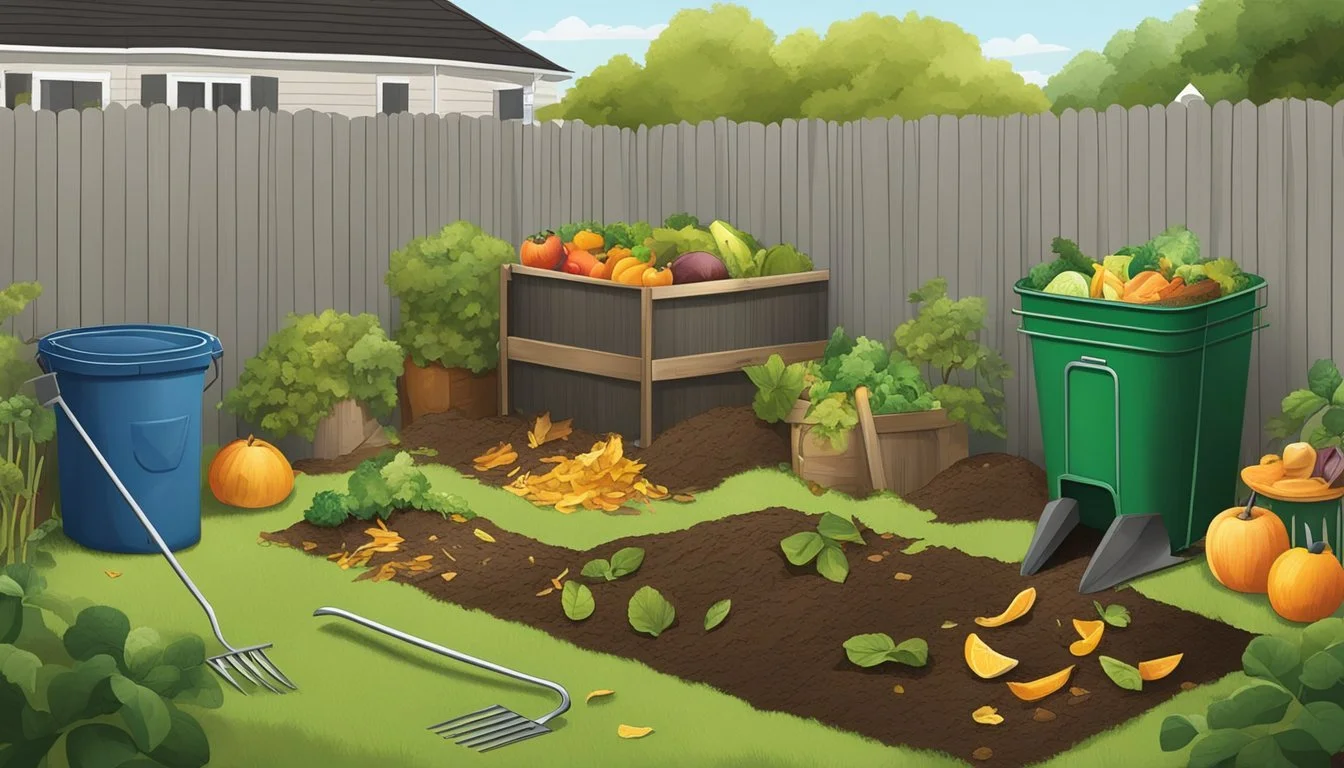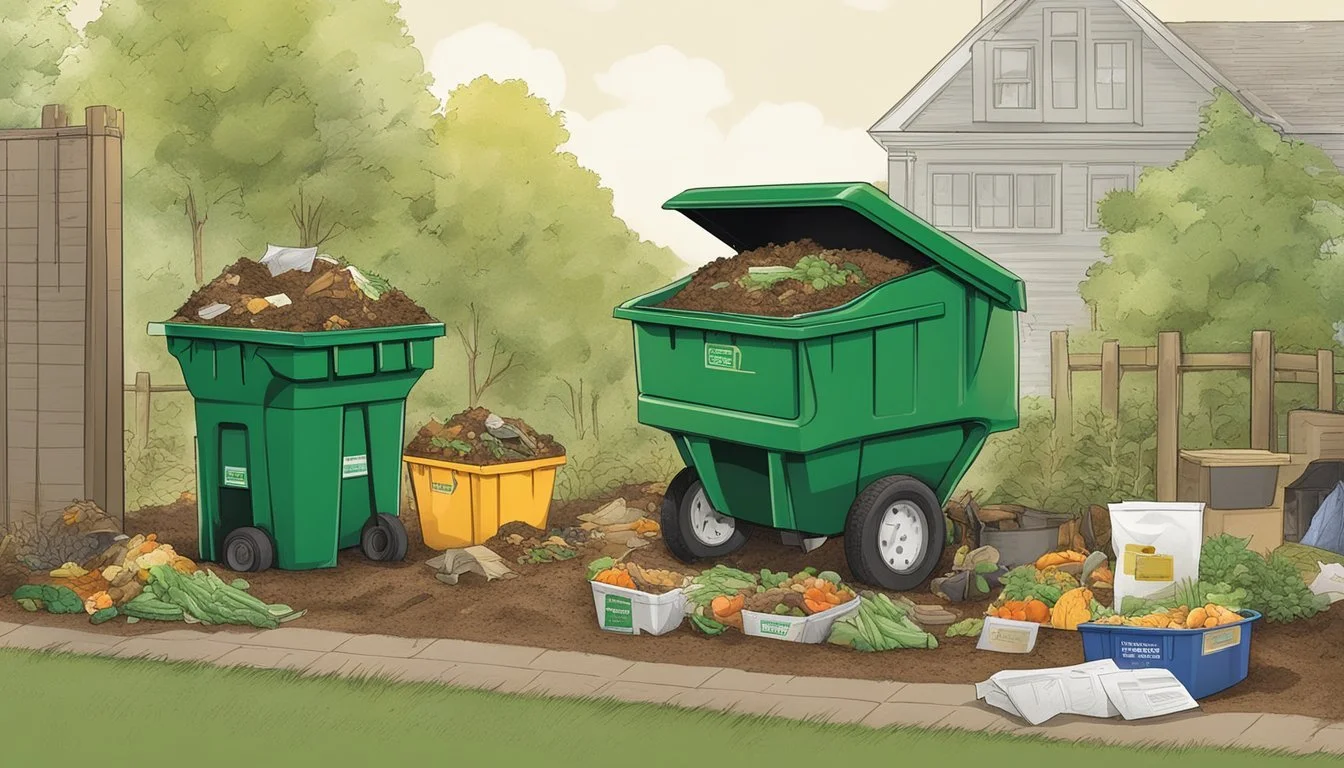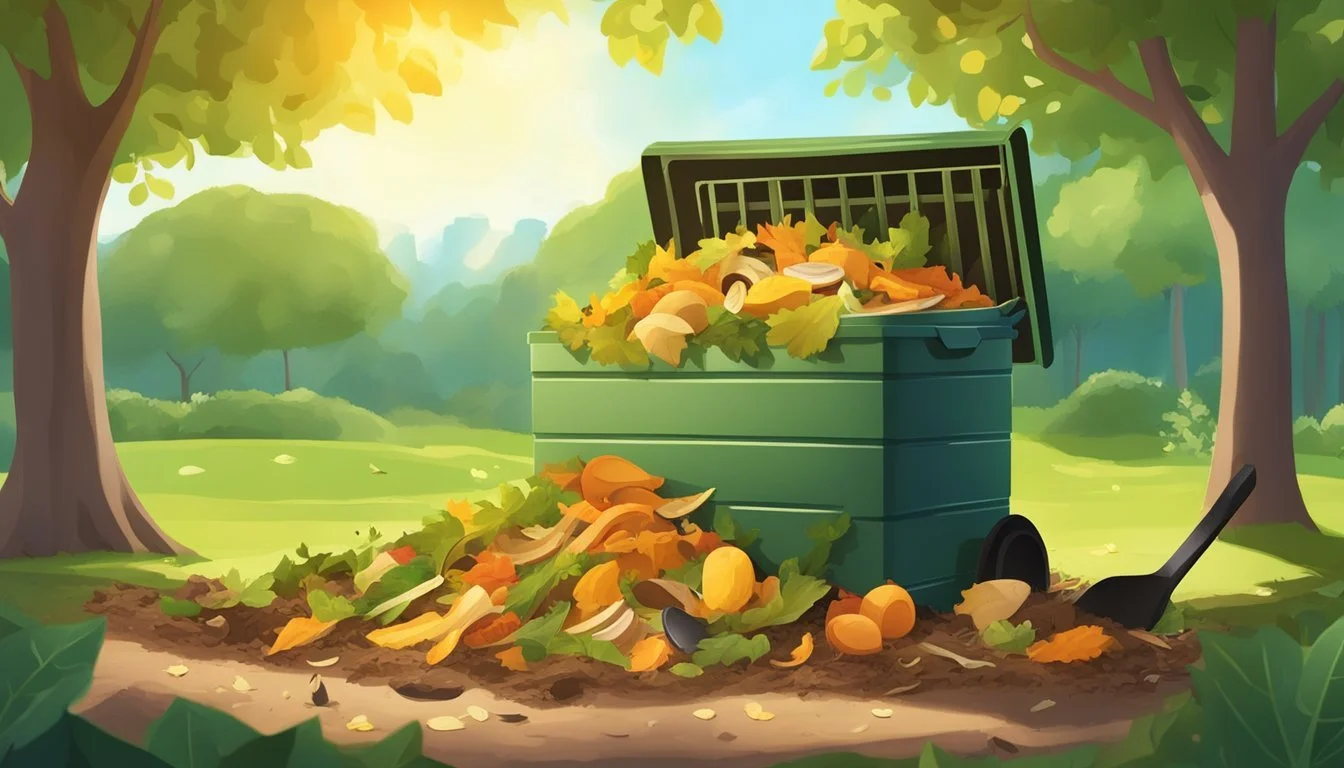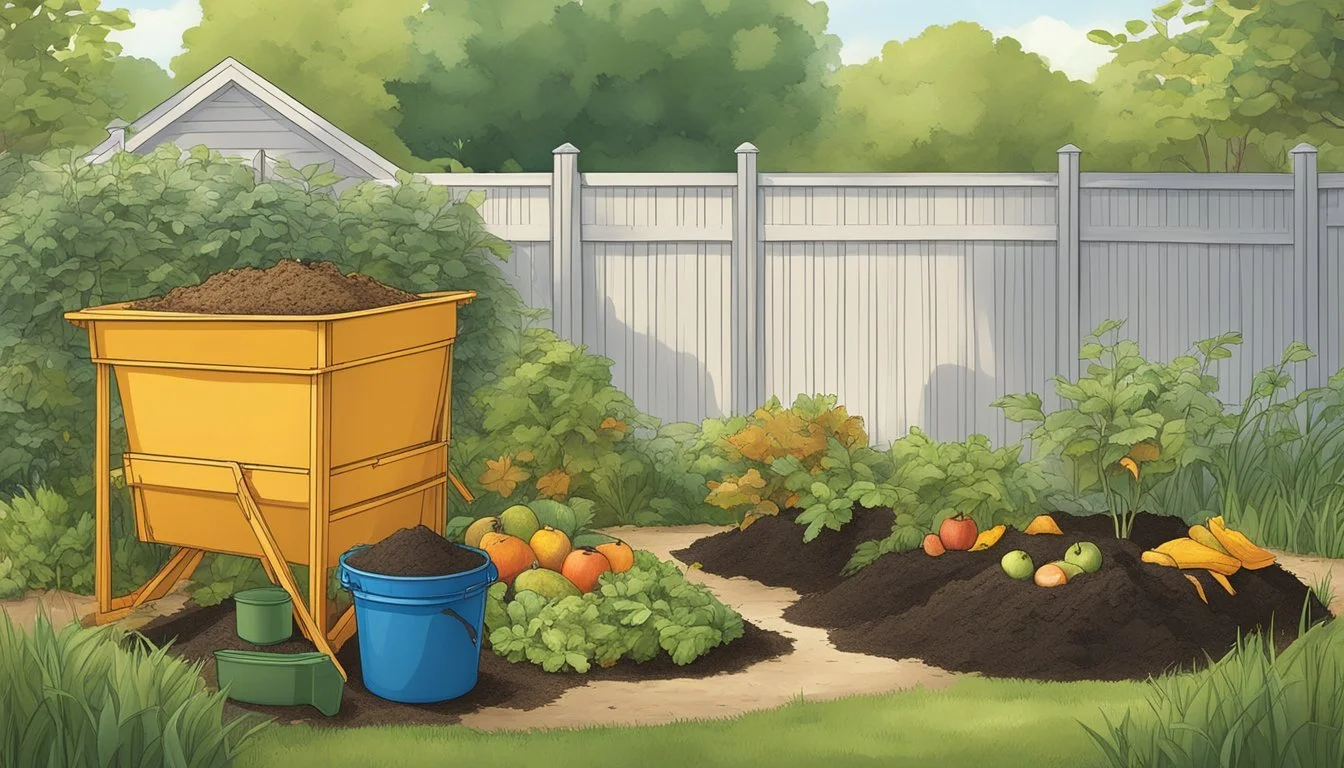Guide to Composting in Stamford, CT
Strategies for Sustainable Waste Management
Composting offers an effective way for Stamford, Connecticut, residents to minimize their environmental impact while contributing to soil enrichment. This method of recycling organic waste helps to reduce the amount of trash sent to landfills, which in turn decreases methane emissions—a potent greenhouse gas. In Stamford, a city known for its sustainability initiatives, composting is a community effort supported by municipal programs that place the city at the forefront of waste management and environmental stewardship. By turning kitchen scraps and yard trimmings into valuable compost, residents can play an active role in the city's green agenda.
The process of composting in Stamford is accessible to all residents, thanks to resources provided by the city and state. Locals can learn how to effectively turn their organic waste into nutrient-rich compost through guidelines and programs available from the City of Stamford's official website. Additionally, Connecticut's government provides further educational materials on how to set up and maintain a home composting system, emphasizing the ease and benefits of the practice.
Residents looking to become more involved in larger-scale composting efforts can benefit from information on Stamford’s food scrap recycling initiatives and leaf and Christmas tree collection for composting purposes. With options for those preferring to compost at home or participate in the city's programs, Stamford illustrates the practicality and environmental advantages of integrating composting into daily waste reduction efforts. Through local engagement and available resources, Stamford showcases how composting is a key component of a sustainable future.
Benefits of Composting
Composting transforms organic material like food scraps and yard waste into a valuable resource for gardens and landscapes. It not only enriches the soil but also reduces the need for chemical fertilizers, minimizes landfill waste, and helps mitigate climate change.
Soil Enhancement
Composting offers remarkable benefits for soil health. By adding compost, the soil's texture is improved, and its ability to retain water is significantly increased. This is particularly beneficial for Stamford's diverse landscapes, from residential gardens to public parks. Compost is rich in nutrients essential for plant growth, acting as a natural fertilizer that releases nutrients slowly and prevents nutrient run-off.
Nutrient-rich: Compost provides a slow release of nutrients like nitrogen and phosphorus that are vital for plant health.
Water Retention: Improved soil structure means better water-holding capacity, reducing the need for frequent watering.
Reduction in Landfill Waste
Composting is an effective waste management practice that significantly reduces the volume of food scraps, leaves, and grass clippings that would otherwise end up in landfills. By diverting these materials from the waste stream, Stamford can minimize its landfill footprint, which helps to lessen the production of methane, a potent greenhouse gas.
Waste Diversion: Up to 30% of what residents throw away could be composted instead.
Methane Reduction: Diverted organic material results in lower methane emissions from landfills.
Environmental Impact
The environmental implications of composting are profound. It plays a critical role in sequestering carbon in the soil, which can help combat climate change. Furthermore, the process of composting organic material itself is beneficial because it occurs aerobically, reducing the production of methane compared to anaerobic processes in landfills.
Carbon Sequestration: Compost enriches soil with carbon-based materials, which helps offset carbon emissions.
Climate Change Mitigation: Reduced methane emissions from landfills through composting aid in climate change mitigation efforts.
Composting in Stamford, CT, supports a thriving community by enhancing the health of the soil, reducing landfill waste, and contributing to environmental preservation efforts.
Basics of Home Composting
Home composting transforms organic materials into a nutrient-rich resource for gardens and plants. This process not only reduces food waste but also enhances soil health.
Understanding Composting Materials
Composting requires a balance of green and brown materials. Green materials are rich in nitrogen and include kitchen scraps like fruit and vegetable peelings, coffee grounds, and grass clippings. Brown materials provide carbon and consist of dried leaves, shredded paper, and wood chips. A successful compost pile alternates layers of these materials, maintaining a ratio that supports microbial activity and breaks down the waste into compost.
Setting Up Your Composter
Choosing the right composter is essential in managing waste and water usage effectively. It should be placed on soil or grass in a spot that's accessible yet not in direct sunlight. Starting with a layer of twigs or woody stalks will allow for drainage and aeration. After this base, alternate between green and brown material layers, ensuring each is a few inches thick. Maintaining moisture is key, so adding water to maintain a damp-sponge consistency is necessary. Regular turning of the compost ensures oxygen reaches the organic material, speeding up the decomposition process.
Community and Municipal Composting Initiatives
In Stamford, CT, effective composting programs are a cornerstone of municipal efforts to foster sustainability. The city and its community members collaborate through various initiatives to reduce waste and enhance soil health.
Katrina Mygatt Recycling Center and Other Facilities
The Katrina Mygatt Recycling Center serves as an instrumental facility for Stamford's composting efforts. Residents can bring yard waste to the center where it is then turned into compost. Compost bins are available for those interested in home composting, promoting organics recycling at a grassroots level. Additionally, the city operates transfer stations that facilitate the sorting and proper disposal of organic waste.
CT Compost Alliance and Networking
The Connecticut Compost Alliance is a pivotal coalition of aerobic composting enthusiasts. This network includes municipalities, businesses, and individuals working collectively to enhance composting practices across Connecticut, with an emphasis on education and community composting. Through workshops and shared resources, they empower residents to incorporate composting into their daily lives and contribute to statewide sustainability goals.
Composting Regulations and Guidelines in Stamford
In Stamford, Connecticut, residents and businesses adhere to specific regulations and guidelines for composting, as set forth by the city and the Connecticut Department of Energy and Environmental Protection (DEEP).
Permitted and Restricted Items
The guidelines clearly define what items can and cannot be composted to maintain health and safety standards. Below are the items with specified categories:
Permitted Items for Composting:
Fruit and vegetable scraps
Yard waste (grass clippings, leaves)
Yard trimmings from plants and shrubs
Coffee grounds
Bread, snacks, and nuts
Restricted Items:
Meat, poultry, and fish
Dairy products, such as cheese and butter
Fats and oils
Diseased plant material
Pet waste (dog and cat feces)
Animal feed containing meat or dairy
Egg shells (due to potential disease)
Health and Safety Standards
The City of Stamford, in collaboration with the Connecticut Department of Energy and Environmental Protection, places a strong emphasis on health and safety in composting practices. Residents are advised to:
Avoid composting meat, dairy, and fats, which can attract pests and cause odor issues.
Exclude diseased plant materials and pet waste to prevent the spread of pathogens.
Mixing paper towels in with compostable material is encouraged, provided they have not been used with restricted substances.
Compliance with these standards ensures that composting efforts support a healthy environment while reducing waste in Stamford, Connecticut.
Advanced Composting Techniques
Expert composters in Stamford, CT, know that advanced composting techniques can enhance the quality of their finished compost while optimizing the processes involved. These methods range from utilizing the efficiency of worms to scaling up operations for larger composting facilities.
Worm Composting
Worm composting, or vermicomposting, is a method that leverages worms to break down organic waste into high-quality compost. Suitable for both indoor and outdoor settings, this process requires a bin filled with red wigglers, a species of earthworm. Greens, such as vegetable scraps, and browns, like shredded newspaper, provide the necessary food for the worms. The result is a rich potting soil additive that is beneficial for garden centers and home gardens alike.
Steps to set up a worm compost bin:
Choose a container that is shallow and wide.
Drill ventilation and drainage holes in the container.
Prepare bedding using moistened strips of newspaper or cardboard.
Add the worms and start with a small amount of food scraps.
Maintain moisture and gather finished compost from the bottom of the bin periodically.
Composting for Large-scale Operations
Large-scale operations, such as those implemented in institutions or municipal programs, can take many forms but often involve larger composting systems. Techniques such as windrow composting or in-vessel composting can facilitate the managing of larger volumes of organic waste, often seen in school composting initiatives. These methods require careful monitoring of temperature, moisture, and aeration to ensure efficient decomposition of organic materials.
Key considerations for large-scale composting include:
Sourcing of large volumes of organics, balancing greens and browns.
Implementing systems to turn and aerate piles to promote faster decomposition.
Monitoring to adhere to environmental regulations and standards.
By employing these advanced composting techniques, Stamford’s residents and institutions contribute to sustainability and ecological health, producing enriching soil amendments that support local agriculture and landscaping.
Using Compost in Gardening and Landscaping
Compost offers a wealth of benefits for both home gardens and public spaces, enriching soil and promoting plant health.
Application for Home Gardens
In home gardens, compost acts as a natural fertilizer, introducing vital nutrients into the soil which are essential for plant growth. For effective application, follow these steps:
Test Soil: Determine the soil type—clay, sand, silt, or loam—to gauge how much compost is necessary.
Mix Compost: Before planting, mix compost into the top 6 to 8 inches of soil.
Mulch: Use compost as a mulch layer to retain soil moisture and suppress weeds.
For lawns, a thin layer of compost can be spread to nourish the grass and improve soil structure.
Contribution to Public Spaces
Compost plays a pivotal role in the maintenance and health of public spaces such as parks and community gardens. The local management in Stamford, CT integrates compost in various ways:
Soil Amendment: Compost is worked into garden beds and landscaping areas to bolster soil health.
Erosion Control: By applying compost, soil erosion in parks is significantly reduced, protecting the green spaces.
By incorporating compost in both individual and community practices, the soil health of gardens and parks in Stamford, CT can be substantially improved, fostering a stronger, more resilient environment.
Educational Resources and Community Engagement
Stamford's dedication to environmental sustainability shines through its robust educational resources and avenues for community engagement in composting practices. Businesses, non-profits, and residents are actively encouraged to learn more and engage in building a greener city through the Director of Recycling and Sanitation's initiatives and collaborative efforts with various organizations and stakeholders.
Stamford's Director of Recycling and Sanitation
The City of Stamford's Director of Recycling and Sanitation plays a pivotal role in educating the public on the benefits of composting. Through the City’s official composting webpage, residents can access a wealth of information on how to compost, as well as details on the city's leaf and Christmas tree collection programs, which are turned into compost. This department serves as a point of contact for businesses and individuals looking to contribute to Stamford's composting efforts.
Non-Profit Organizations and Stakeholder Involvement
In Stamford, non-profit organizations are instrumental in driving composting education forward. The Connecticut Compost Alliance, a coalition of compost enthusiasts, offers resources and knowledge to stakeholders across the state. They provide educational material and organize events to engage the community in compost-related activities. Similarly, the state’s official resources like the Composting and Organics Recycling page supply manuals and guides that help schools and other institutions in implementing composting systems, thereby fostering a community invested in sustainable waste management practices.
Composting Challenges and Solutions
In Stamford, CT, effective composting strategies help reduce waste and benefit the planet, but challenges such as contamination and awareness can hinder progress. Addressing these issues requires smart solutions that enhance both the quality and volume of composting efforts.
Contamination Management
Contamination in compost bins, primarily from non-compostable materials, can downgrade the quality of the resulting compost. Stamford's recycling guidelines are crucial for keeping contaminants out of the compost stream. They recommend an upgrade to composting bins that are better at preventing contamination. Additionally, the food scrap recycling program aims to educate residents on proper sorting to minimize the volume of garbage mixed with compostables like kitchen scraps and sawdust.
Promotion of Composting Practices
To increase the participation rate in composting efforts, Stamford implements clear, consistent messaging across various platforms. They organize workshops on the environmental benefits of reducing municipal solid waste through composting, detailing how the practice contributes to a healthier planet. The promotion goes hand-in-hand with the city's upgrade to more user-friendly composting systems that encourage broader community engagement.
Conclusion
In Stamford, Connecticut, composting stands out as an effective strategy for waste reduction and environmental conservation. The city's commitment to sustainable practices is reflected in its various initiatives that encourage residents and businesses to engage in composting activities.
Composting provides an opportunity for households to convert organic waste into nutrient-rich soil amendement right in their own backyards. This not only reduces the amount of waste sent to landfills but also enriches the soil for gardening. Stamford has continued to show leadership in this area, as evidenced by its push for increased food composting with the assistance of grants and educational programs.
Local residents have access to resources and manuals that support them in starting their composting journey, clearly indicating that the city values the role of composting in its waste management and recycling efforts. Stamford's sanitation department ensures a clean environment by leading recycling initiatives, which are complemented by composting measures.
For those eager to explore this eco-friendly practice, a variety of online videos and manuals are available at the Connecticut Department of Environmental Protection. Stamford's example demonstrates how composting has become an integral part of its endeavor to foster a greener and more sustainable future.











